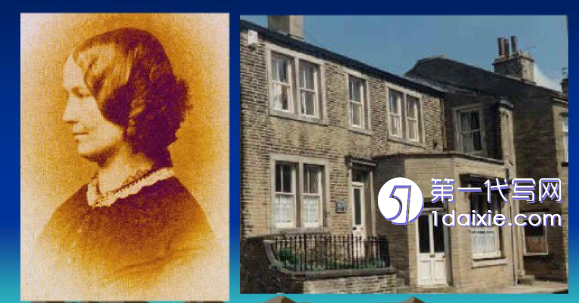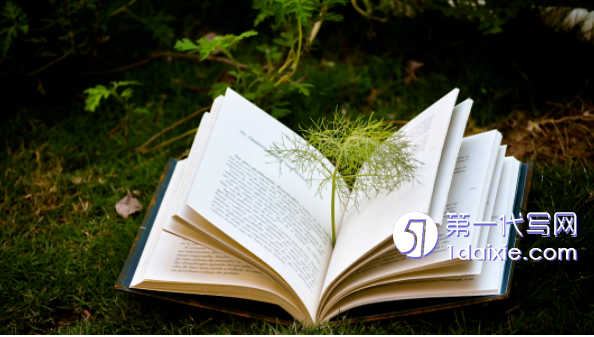本文是一篇英语毕业论文,本论文立足于申丹的双重叙事进程理论,指出勃朗特在《简•爱》的情节发展中呈现出对“家中天使”认同的婚姻观,却在隐性进程中流露出民族优越感以及对殖民地女性的殖民压迫。
Chapter 1 Theoretical Frameworks
1.1 Dual Narrative Progression

In the first place, the dual narrative progression established by Shen Dan will be introduced as the main theoretical basis, which helps to dig out Charlotte Bronte’s invisible sense of national superiority and colonial consciousness.
Shen Dan is a Changjiang Scholar of English Language and Literature at Beijing University, PR China, who published six books and more than one hundred essays in China, North America and Europe in the area of narrative studies, stylistics, and translation studies (Shen, 2001:2). Based on continuous thinking and self-sublation in recent 10 years, she successfully challenged the traditional single narrative and published a series of articles and monographs to put forward, explicate, and put into practice her theory of Dual Narrative Progression.
Dual Narrative Progression is systematically expounded in her work—A Study of Dual Narrative Progression, which is the excellent result of the National Social Science Fund project, and also selected into the national philosophy and social science achievements library (Shen, 2001:1). The work is the first one to systematically discuss and analyze “dual narrative progression” composed by “convert progression” and “plot development” in the world. The new theory about covert progression becomes an intense preoccupation in International academia. It is perceived as a major breakthrough by an international famous scholar J. Hillis Miller.
1.2 Angel in the House
“Angel in the house” was the Victorian definition of an ideal woman. In the book The Cult of True Womanhood: 1820-1860: in order to discuss the image of the ideal Victorian woman, Barbara Welt puts forward that “any perfect and normative young woman should cultivate these four virtues: piety, purity, domesticity and submissiveness”. The reference to perfect women as “angels” was attributed to the Victorian poet Coventry Patmore (1823-1896), who in his poem “Angels in the House” called women “perfect creatures, admired by all, like angels with laurels on their heads”. As the paragon of Victorian women, “angel in the house” has a profound impact on women of all walks of life and a large number of women constrained themselves according to the standard of “angel in the house”. And as angels in the house, their best qualities are purity and childlike innocence. In Victorian society, sexual purity was particularly complimented.
But “angels in the house” also have their limitations. Sally Mitchell mentioned in Life in Victorian England: “Many people think that marriage and the family solve women’s problems. However, for the majority of unmarried unemployed working-class women, they have to compete for jobs” (Sally, 1996). Being financially dependent on their employer, they must appear dedicated, industrious and obedient.
Chapter 2 Jane Eyre’s Duality
2.1 Angel in the House Yearning for Family
In the plot development, Jane Eyre’s way of communicating with men and final return to Rochester demonstrates that she possessed the characteristics of “angel in the house” who had desire for an intact family.
2.1.1 Desire for Intact Family
Shen Dan points out that the different positions taken by the authors in the creation of different works are often closely relevant to their social environment. So a combination of analysis of the text and off the text can help detect and explain covert progression (2001: 64). Jane Eyre is an autographical work of Charlotte Bronte. Therefore, it is genuinely essential to focus on her own views towards marriage and family when the protagonist will be discussed and analyzed.
In An Hour with Charlotte Bronte, C. Holloway discusses Charlotte Bronte’s individual life and draws a conclusion: “In her novels, there are mainly the description of her real individual experience. She does not originally create the content in the novel of which her imagination is the background and her own understanding of individuals and things provide the material for the creation of the novel which is the view that critics of Charlotte Bronte’s life and works have taken of her creation. Holloway further points out, “If she hasn’t had that experience, we will know nothing about her work” (Holloway, 1883).
2.2 The Oppression of Mason in Order to Achieve Her Own Goal
Different from Jane Eyre’s image of angel in the house in the plot development, what she presented in the covert progression was a white woman who has colonial consciousness since childhood and later oppressed Mason in order to achieve her plan and goals.
2.2.1 The Emergence of Colonial Consciousness
Shen Dan also points out that the different positions taken by the authors in the creation of different works are closely relevant to their personal experience (Shen, 2001:64). And the best way of digging out the author’s individual experience is to figure out more information in his or her autographical work.
Although Charlotte grew up in a poor parson’s family in the country, she was not an ill-informed woman. In the early years, she and her sister have come to Europe to study in order to broaden their outlooks rather than focus on the trivial matters of the country and her family (Zhang&Huo 2021:52). It could be seen in the works that Eyre read when she was a child: Bewick’s paintings, Cotes’s children’s book—A History of English Birds, Gulliver’s Travels and The Arabian Nights, which has obvious demonstration of the Eastern otherness consciousness. Elleke Boehmer, in the first chapter of Colonial and Postcolonial Literature (1990), stresses The Arabian Nights is one of the texts that European scholars and colonial officials thought and absorbed very carefully in particular. It could be seen that Eyre’s colonial consciousness and sense of national superiority have existed since she was a child.
Chapter 3 Edward Rochester’s Duality ............................ 30
3.1 A Victorian Man in Search of Angel in the House ............................. 30
3.1.1 Victorian View on Marriage .................................. 30
3.2 The Conspirator of Jane Eyre ...................................... 33
Chapter 4 Bertha Mason’s Duality .............................. 41
4.1 The Mad Woman in the Attic ............................. 41
4.1.1 The Barrier of Jane and Rochester’s Love ................................... 41
4.1.2 Lascivious Mad Woman ............................... 42
Conclusion ............................ 48
Chapter 4 Bertha Mason’s Duality
4.1 The Mad Woman in the Attic

In the plot development, Mason was the barrier of Jane Eyre and Rochester’s love. Her madness made Rochester have no willing to live with her.
4.1.1 The Barrier of Jane and Rochester’s Love
In the triangle relationship between Jane, Rochester and Mason, Mason is often regarded as “demon”, “vampire”, “mad woman”, “abandoned woman”, “pervert” and so on. According to Rochester’s narration: “she flattered me, and lavishly displayed for my pleasure her charms and accomplishments” (Bronte, 2012:289), “I was dazzled, stimulated: my senses were excited; and being ignorant, raw, and inexperienced, and I thought I loved her” (Bronte, 2012:289), “her relatives encouraged me; competitors piqued me; she allured me: a marriage was achieved almost before I knew where I was” (Bronte, 2012:289). As the victim of this marriage, Rochester was tricked by his father, married her and brought her back to England out of will of God. At Thornfield, he confined her with due attendance and precautions in the attic for ten years. In Jane Eyre, the direct description of Mason is limited except her revenges. In other words, each appearance of Mason is accompanied by a frenzy of revenge. The first time she bit her brother, who travelled a long way to see her; the second time she deliberately set fire to Rochester’s room at night; the third time she peeked at Jane’s wedding dress and tore it; the last time she burned Thornfield manor and died in the fire. As previously stated, Mason in Jane Eyre was a wild, demonic, mad woman in the attic who allured Rochester and was the barrier of Rochester and Jane’s marriage. After her death, Rochester and Jane can live with each other and be exempt from worldly obstacles.
Conclusion
This essay focuses on the duality of Jane Eyre, Rochester Edward and Mason in the plot development and covert progression of Jane Eyre, based on theories and concept of dual narrative process theory, postcolonial feminism theory and “angel in the house”.
Different from the “angel in the house” of Jane Eyre who yearns for a complete family in the plot development, she is a white woman with a sense of ethnocentrism and colonial oppression of Mason in the covert progression. Rochester is a loyal supporter of Victorian marriage view in the plot development, but becomes a conspirator of Jane Eyre to deprive Bertha of her discourse power in the covert progression. In the plot development, Mason is a mad woman in the attic who is the barrier of love between Jane Eyre and Rochester. In the covert progression, she is a brave rebel, but finally she fails.
As an autobiographical novel, Jane Eyre ostensibly describes the romantic love story of an atypical “angel in the house” who longs for a complete family and bravely pursues happiness by breaking the class gap and the obstacles of the crazy woman in the attic in the plot development. And she finally gains a happy family as she wishes. In fact, in the covert progression, Jane Eyre reveals the British sense of national superiority and the racial oppression and the deprivation of women’s discourse power. In the almost unanimous praise, the novel seems to convey a female’s brave pursuit of happiness, fully in line with contemporary Western readers’ aesthetic expectations.
reference(omitted)
